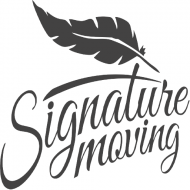How to Move a Piano

When it comes to moving a piano, there are essential steps to consider that can make the process smoother and safer. Many homeowners underestimate the complexity involved and risk damaging both their instrument and property by not seeking comprehensive moving services from professionals who understand these unique challenges. From securing loose parts to using the right equipment, every detail matters when relocating these heavy, delicate instruments. Navigating tight spaces and tricky corners requires specific techniques and proper preparation. This guide outlines key strategies for successfully relocating a piano without risking damage to this valuable investment.
Preparing the Piano
Before moving a piano, we always carefully prepare it by securing the keys, pedals, and any loose parts to prevent damage during transportation. Securing the keys involves closing and locking the fallboard, which is the part that covers the keys. This step ensures that the keys remain stationary and protected. Next, we secure the pedals by wrapping them with a soft cloth or padding and then using tape to hold the padding in place. Any loose parts, such as music stands or decorative elements, are removed and securely stored to prevent them from shifting or causing damage. Taking the time to properly prepare the piano is vital for ensuring a smooth and damage-free moving process.
Gathering the Right Equipment
To move a piano efficiently and safely, you must gather appropriate equipment for the task. Key items include heavy-duty gloves to protect your hands, furniture straps or moving straps to aid with lifting, a furniture dolly for easier transportation, moving blankets or pads to prevent scratches, and strong securing ropes or straps to keep the piano stable during transit. Having a toolbox with basic tools like screwdrivers and pliers can be useful for any last-minute adjustments. Check that all equipment is in good condition and properly functioning before starting the moving process. Having the right tools on hand reduces the risks and challenges associated with moving a piano.
Securing and Lifting the Piano
To safely secure and lift a piano, position the furniture straps securely underneath the instrument, ensuring a strong and stable grip before attempting to lift. Once the straps are in place, confirm they are tightened securely to avoid slippage during the lifting process. When preparing to lift, make sure to have a clear path and good communication with your lifting partner to avoid accidents. Remember, pianos are heavy and delicate instruments that require careful handling to prevent damage.
- Position the furniture straps securely: Confirm they are snug and won’t slip.
- Tighten the straps carefully: Prevent any chance of the piano shifting.
- Communicate with your lifting partner: Coordination is key to a successful lift.
Maneuvering Through Doorways and Stairs
After securing and lifting the piano successfully, navigate the challenge of maneuvering it through doorways and stairs with caution and precision. When moving through doorways, ensure the path is clear of obstacles and measure the doorway’s width to determine if the piano can fit through. Tilt the piano slightly to angle it through the doorway, taking care not to damage the walls or the piano itself. When tackling stairs, use a sturdy dolly and have one person stabilize the piano from the top while others carefully guide it down step by step. Always move slowly and communicate effectively to avoid accidents. Patience and teamwork are essential when maneuvering a piano through tight spaces.
Setting up the Piano in Its New Location
Guiding the piano to its assigned location, carefully position it for optimal acoustics and aesthetics in its new residence. Proper setup is essential for both sound quality and overall appearance. Consider these key steps:
- Floor Placement: Position the piano away from direct sunlight and drafts to prevent damage.
- Tuning: Allow the piano to adjust to the new surroundings before tuning to maintain pitch stability.
- Regulation: Check the piano’s regulation, including the touch and responsiveness of the keys, to ensure optimal playability.
Related Articles:
